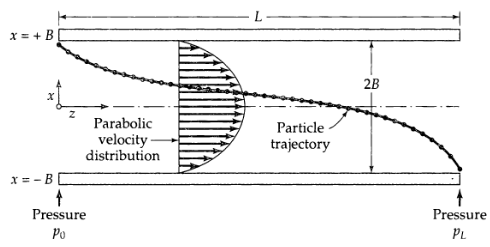Performance of an electric dust collector (see Fig. 2C.1) 5 (a) A dust precipitator consists of a
Question:
Performance of an electric dust collector (see Fig. 2C.1)5
(a) A dust precipitator consists of a pair of oppositely charged plates between which dust-laden gases flow. It is desired to establish a criterion for the minimum length of the precipita-tor in terms of the charge on the particle e, the electric field strength 2, the pressure difference (P0 - PL), the particle mass m, and the gas viscosity μ,. That is, for what length L will the smallest particle present (mass m) reach the bottom just before it has a chance to be swept out of the channel? Assume that the flow between the plates is laminar so that the velocity distribution is described by Eq. 2B.3-2. Assume also that the particle velocity in the z direction is the same as the fluid velocity in the z direction. Assume further that the Stokes drag on the sphere as well as the gravity force acting on the sphere as it is accelerated in the negative x direction can be neglected.
(b) Rework the problem neglecting acceleration in the x direction, but including the Stokes drag.
(c) Compare the usefulness of the solutions in (a) and (b), considering that stable aerosol particles have effective diameters of about 1-10 microns and densities of about 1 g/cm3.

Step by Step Answer:






